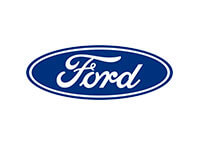
Electric Cars at Stoneacre
We represent multiple brands who are producing a number of electric vehicles, with more on the way.
.jpg)
Electric cars are here...
It’s no secret that we’re moving towards an all-electric future when it comes to the world of automotive, with manufacturers aiming to fill their car ranges with fully electric vehicles come 2030.
Despite their fairly conventional exteriors, electric vehicles are much less conventional underneath, with EVs propelling themselves exclusively with electric power.
While some may feel anxious about the future of motoring, electric cars offer many benefits for drivers, as well as for the environment. The ability to charge our vehicles at home, and for much less than it would cost to fuel them up, being a key advantage.
How do electric cars work?
Instead of an internal combustion engine (ICE), all-electric cars are powered by energy from a battery, usually stored in the floor of the vehicle.
The energy the battery stores is distributed to - and converted into power by - an electric motor which in turn drives the wheels of the vehicle.
Another major difference between an EV and ICE vehicles is the distribution of that power - thanks to the torque created by the electric motor, there is no geared transmission in an electric car and is effectively a single-speed vehicle with no gear changes required.
Of course, to get this power, the car no longer requires fuel such as petrol or diesel, but instead needs to be charged. The great advantage to this is that we need not leave our homes to do this, as EVs can be charged through a wallbox unit or even through a conventional three-pin plug. On the go, though, you’ll need to find a charging point to replenish your vehicle’s battery - find out more about charging your EV on our Blog.
Electric cars for sale
Here at Stoneacre, we represent numerous of the world’s leading manufacturers who are making great strides towards having a comprehensive range of all-electric vehicles for sale.
Already you’ll find a huge assortment of EV cars for sale, and in all shapes and sizes, too.
Models such as the Peugeot e-208 and Corsa-e make for very capable electric hatchbacks. Elsewhere, you’ll find many an electric SUV, such as the MG ZS EV, Ford Mustang Mach-E and all-new Kia Niro EV. Additionally, models such as the Toyota bZ4X and Volvo C40 bridge the gap between hatch and SUV.
Meanwhile, the used EV market is gradually growing as more and more motorists turn to electric cars.
So already there are plenty of deals on electric cars out there to be had. However, you could be forgiven for feeling that the cost of electric cars is a touch too high right now, and that’s fine.
As we get closer to the time where manufacturers have ranges of cars exclusively made up of EVs, electric car prices will align themselves much more with ICE cars. With that in mind, it could be worth holding out till we’re closer to the 2030 target for new cars going 100% electric.
Deals on Electric Cars
Electric Cars in Stock

Driving an electric car
The quietness of the car’s cabin is the first thing you’ll notice about driving an electric vehicle; with no pistons working overtime or transmission changing gear, you’ll be in for a very different experience from the driver’s seat.
Another difference you may pick up on, especially if you’re used to driving modestly powered petrols, is the amount of torque available from the power supply. Electric cars tend to be great at that initial deployment of acceleration, getting from 0-30mph in just two or three seconds usually.
The handling of the car will most likely feel different, too, as the battery or batteries are hunkered down low in the car’s chassis, making for a low centre of gravity and a nicely balanced vehicle.


.jpg)






























